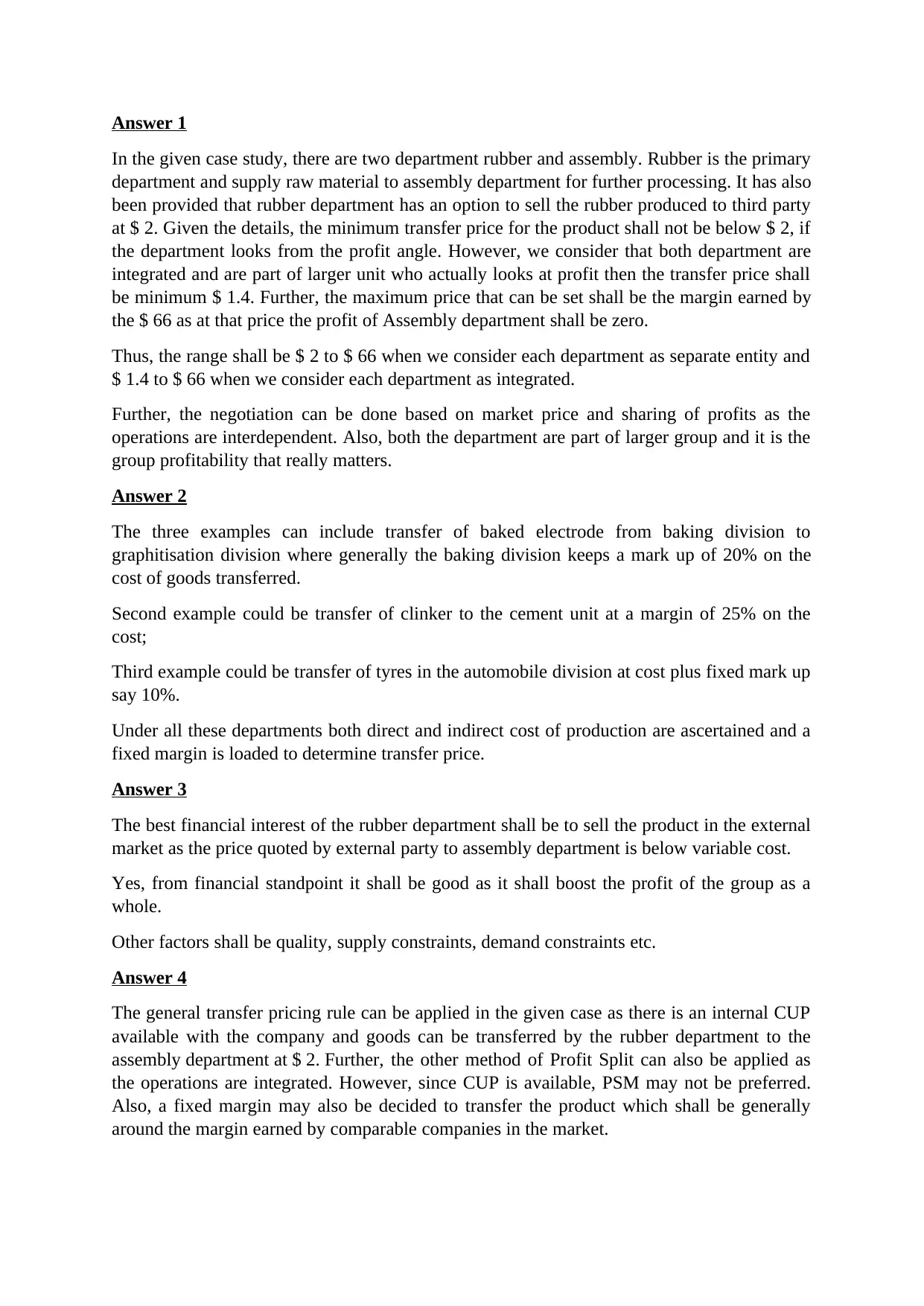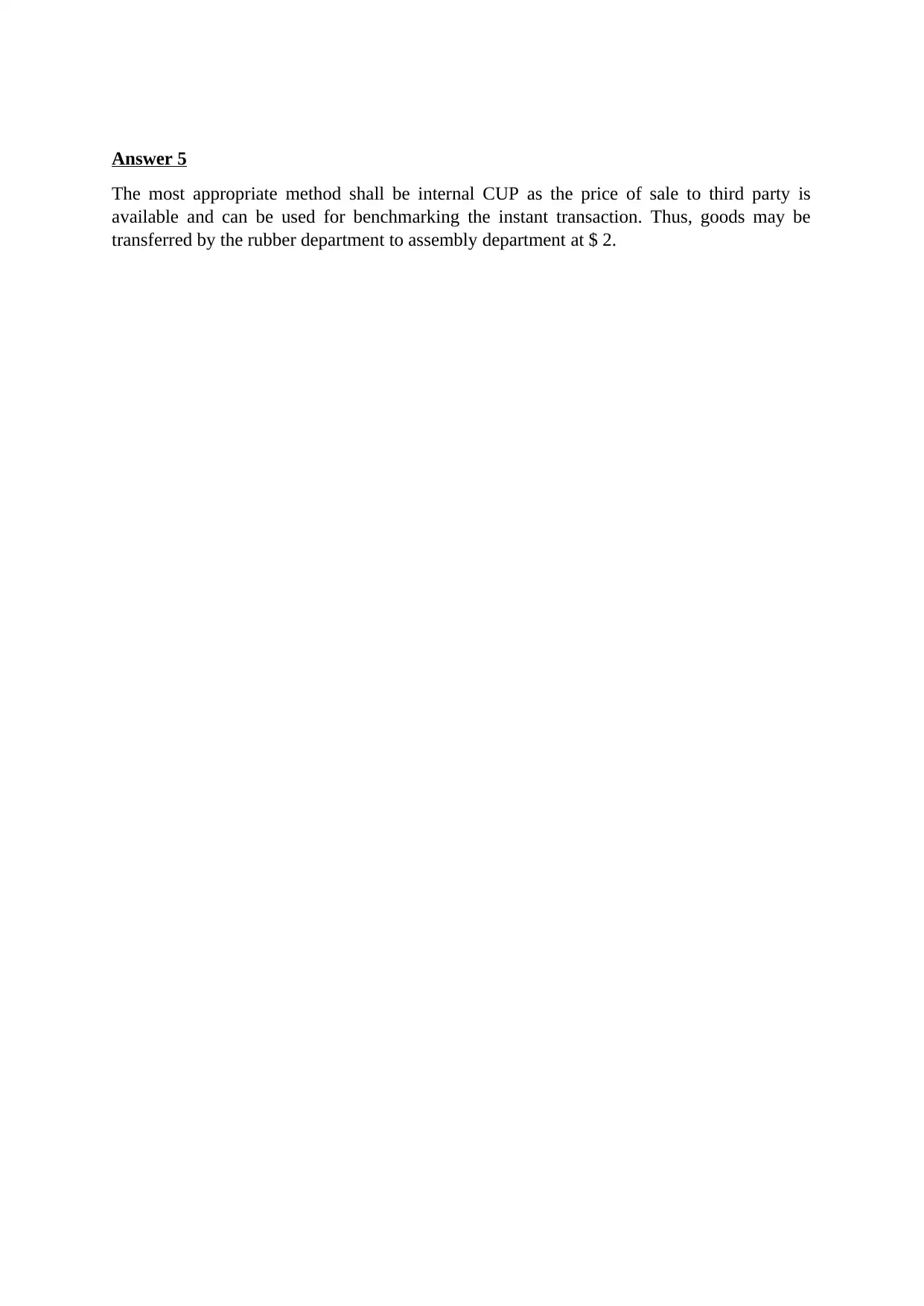ACC311 Transfer Pricing Report: Vans Rubber and Assembly Departments
VerifiedAdded on 2022/10/16
|2
|536
|476
Report
AI Summary
This report analyzes transfer pricing strategies within Vans, specifically focusing on the Rubber and Assembly Departments. It explores how transfer prices can be set through negotiation, considering market prices and the potential for profit sharing. The report examines the minimum and maximum transfer price ranges, considering both departmental and integrated perspectives, and discusses the advantages of selling rubber externally. It applies general transfer pricing rules, including the Comparable Uncontrolled Price (CUP) method and profit split methods, to determine the most appropriate pricing approach. The report also provides examples of transfer pricing in other industries, such as the transfer of baked electrodes, clinker, and tires, highlighting the importance of cost-plus pricing and fixed markups. The analysis considers various factors, including direct and indirect costs, and emphasizes the significance of group profitability in decision-making. The report concludes by recommending the internal CUP method as the most suitable approach for this scenario.
1 out of 2





![[object Object]](/_next/static/media/star-bottom.7253800d.svg)